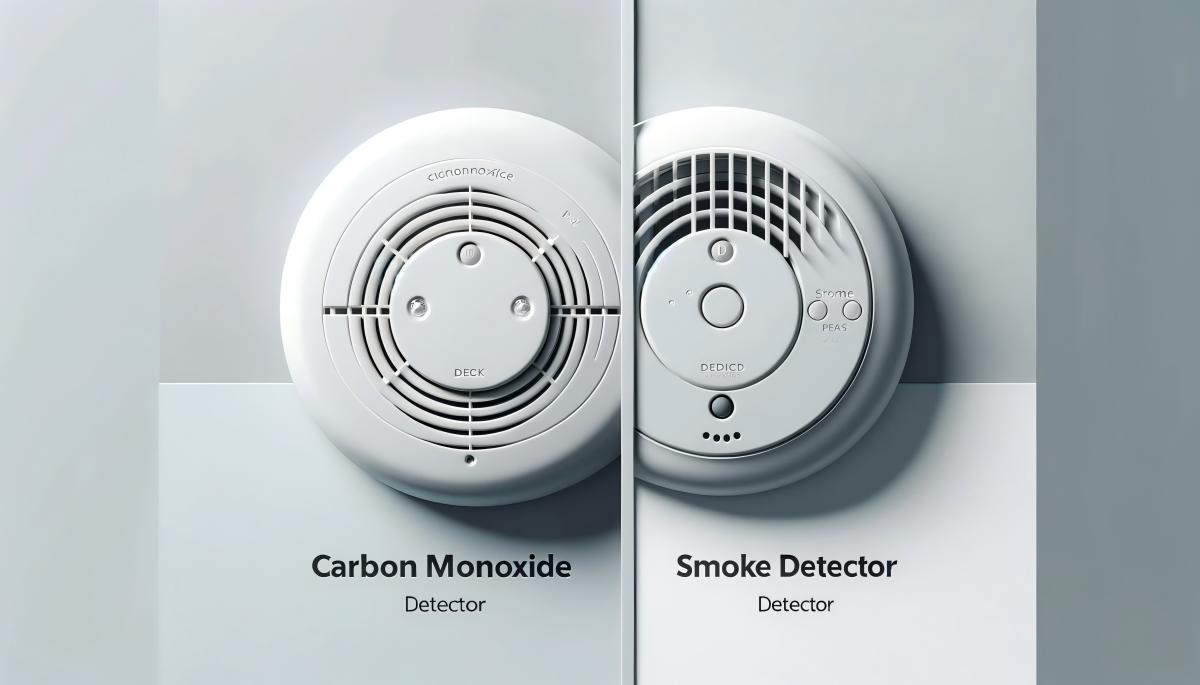Smoke detectors are a crucial part of home safety. They alert us to the presence of smoke, potentially saving lives in the event of a fire. But does a smoke detector detect carbon monoxide, a deadly, odorless gas?
The answer is not as straightforward as you might think. Standard smoke detectors and carbon monoxide detectors are two different devices, each designed to detect specific dangers.
In this article, we’ll explore the differences between these detectors and the benefits of smoke detectors with a 10-year battery. We aim to provide you with the knowledge needed to ensure complete safety in your home.
Understanding Smoke Detectors and Carbon Monoxide
Smoke detectors and carbon monoxide detectors serve different purposes. Smoke detectors sense smoke, signaling potential fire hazards. Carbon monoxide detectors alert to the presence of carbon monoxide (CO), an invisible, odorless gas.
CO is produced by burning fuel in appliances like stoves and heaters. Without adequate ventilation, CO can accumulate and pose severe health risks. Both detectors are essential for comprehensive home safety.
While some detectors combine both smoke and CO detection, many homes rely on separate devices. Understanding the difference is vital for protecting your home and family.
Ensure you have the right detectors installed. Consider placement, testing frequency, and battery life for optimal safety.
The Importance of Carbon Monoxide Detection
Carbon monoxide is extremely dangerous because it’s hard to detect without specific technology. It’s crucial to have a carbon monoxide detector in every home.
CO poisoning can mimic the flu with symptoms like dizziness and headaches. Severe exposure can be fatal, stressing the need for awareness and detection.
Homes with gas appliances, fireplaces, or attached garages are especially at risk. Protecting against CO exposure is non-negotiable for safety.
Installing CO detectors is a small step with significant impact. It ensures a safer living environment for you and your family.
Benefits of Smoke Detectors with a 10-Year Battery
Smoke detectors with a 10-year battery offer significant peace of mind. These devices provide reliable long-term protection without needing frequent battery replacements.
The 10-year sealed smoke detector is designed to be nearly maintenance-free. This reduces the hassle of regular upkeep, making it a convenient choice for busy households.
Over time, the cost-effectiveness of a 10-year smoke detector shines. You save money by avoiding yearly battery purchases and replacements.
There are also notable environmental benefits. Fewer battery changes lead to reduced waste, helping the planet.
Key advantages include:
1. Long-term protection
2. Maintenance-free
3. Cost-effectiveness
4. Environmental benefits
The investment in a smoke detector with a 10-year battery ultimately supports safety, savings, and sustainability.
Choosing the Right Detector for Your Home
Selecting the proper detectors is key to home safety. Consider both smoke and carbon monoxide detectors for thorough protection.
Different detectors suit different needs. Ionization and photoelectric smoke detectors detect fires distinctly. Knowing their strengths helps you make informed choices.
Combination smoke and carbon monoxide detectors offer convenience. These devices consolidate safety features into one unit.
Ensure the detectors you choose comply with local laws. Some areas have specific requirements for the type and number of detectors.
Think about added features like interconnectivity and smart capabilities. These can enhance your home’s safety network efficiently.
Installation and Maintenance Tips
Proper installation and maintenance of detectors are critical for their effectiveness. Placement is crucial; avoid areas near vents, windows, or doors which may hinder detector operation.
Regular testing ensures detectors function when needed most. Test alarms monthly and follow the manufacturer’s guidelines.
Timely replacement of detectors is vital. Replace smoke detectors every decade, even if they have a 10-year battery.
- Proper placement: Position away from drafts.
- Regular testing: Monthly checks are necessary.
- Replacement guidelines: Swap every ten years, regardless of battery life.
Conclusion and Call to Action
Ensuring your home has reliable smoke and CO detectors is crucial for safety. Upgrading to a 10-year model enhances protection and offers peace of mind.
Take a moment today to inspect your current detectors and consider upgrading. Safety first for you and your loved ones.
Post time: Oct-29-2024











